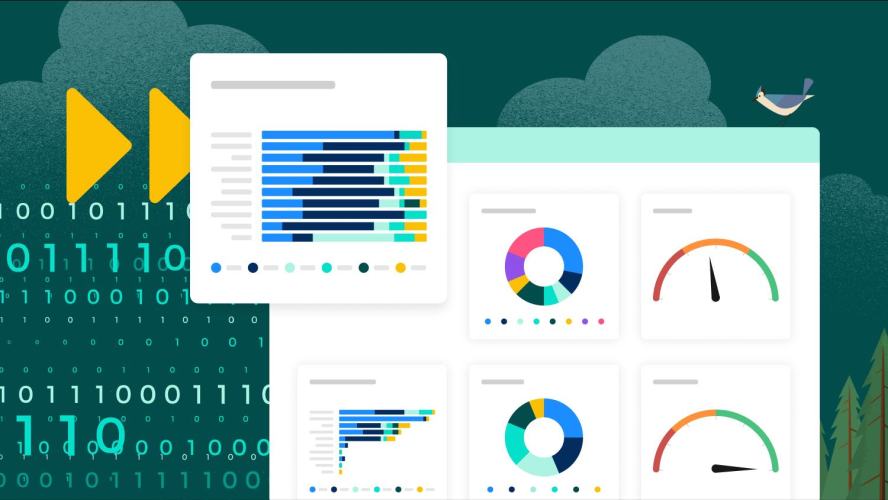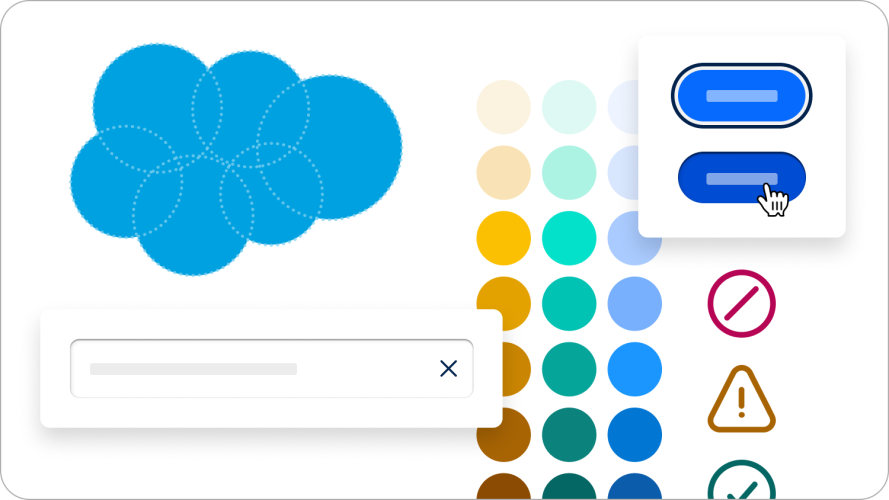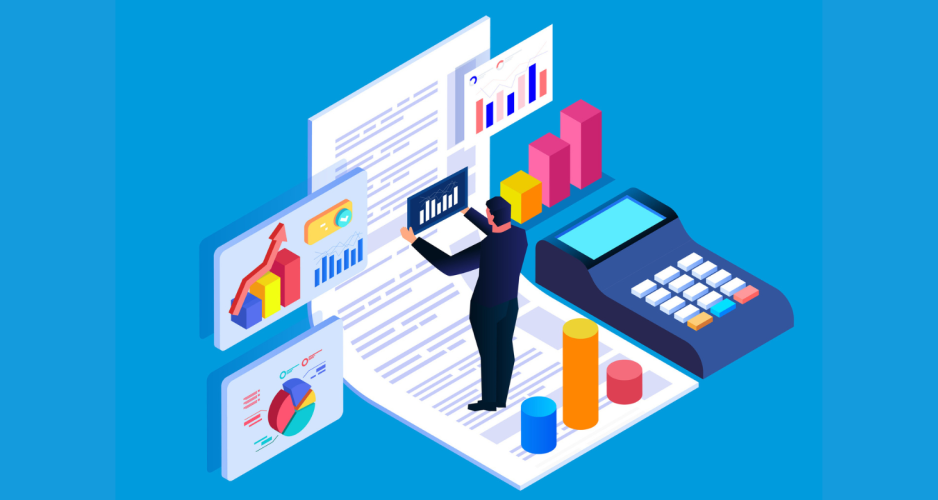What Is Sales Data? And How Does It Help You Sell Better?

Want better insights to close deals fast, or up-to-date pipeline numbers to feed accurate forecasts? Sales data to the rescue.

Kristen Page
Every quarter, my clients’ data footprint continues to expand. Whether it’s customer response rates, leads in pipe, or quota attainment, there is always another metric to track.
But we ignore these metrics at our peril. Sales pros are nearly unanimous in the importance of sales data. Ninety-six percent agree that real-time data is essential to keep up with customer expectations, according to the Trends in Data and Analytics for Sales Report.
That same report also reveals concerns. Sixty-three percent say their company’s data is not properly set up for generative AI, and only 42% are completely confident in their data accuracy.
“Show me the sales data!” has become the new refrain. Sales leaders and sales reps are realizing that to focus on the customer, they need to focus on the data underneath their engagement efforts. They’re working to pull sales data in from trusted sources, analyze it to make better decisions, and run AI on top to become more productive. Below, we share how you can join the movement.
What you’ll learn:
- What is sales data?
- Why is sales data important?
- What are the different types of sales data?
- How to find and collect sales data
- How to track and act on your sales data
- A real-life sales data collection and analysis example
- What tools do you need to manage and interpret your sales data?
Discover the latest data trends from 900+ sales pros
Learn why data is the key to generative AI and personalization, and what leading companies are doing to make the most of their data stores.



What is sales data?
Sales data falls into two big buckets. The first is external data: any information collected about prospects, including demographics, interest, behavior, engagement, and activity as they move through the sales funnel. internal sales data, which includes deal attributes like product type and pricing; and sales rep performance metrics. Together, this external and internal data is used to inform deal actions, gauge progress toward sales targets or other key performance indicators (KPIs), and fuel time-saving tools like AI.
Why is sales data important?
Sales data gives you a way to measure all of the activities related to your sales efforts. This allows you to determine performance benchmarks and set targets to guide sellers toward growth. It also reveals risks in your pipeline, allowing you to address them before they snowball, and helps you identify opportunities that you can make the most of.
For example, a sales team can analyze sales data — whether manually or with analytics like AI — and discover a deal that’s stalled and needs extra attention, an objection in a sales call that went unanswered, or a deal whose dollar amount has changed, putting the sales forecast at risk.
Those are warning signs. But sales data shows you green lights, too. For example, you can use sales data to predict when a customer might be ready for an upsell, or organize a leaderboard that fosters healthy competition among your reps.
Another reason why sales data is so important: taking advantage of generative AI. Nearly four in five sales leaders (78%) are concerned their company is missing out on generative AI according to our latest data report, which can write emails, create sales pitches, and give real-time guidance for next steps in the sales process.
Part of the problem is that generative AI outputs are only as good as its data outputs, and 63% of sales pros say they company’s data is not properly set up for generative AI. It’s why sales teams are focused on cleaning up and collecting their sales data — the basis for insights and the fuel for AI.
What are the different types of sales data?
Sales data can be categorized into data on individual customers and companies, like demographic and buying behaviors; and internal sales performance data, including data collected during the sales process. Here’s a close look at these:
- Demographic data. To sell to your customers, you first have to know who they are. Demographic data includes the fundamental attributes of your customer, including their name, age, gender, role, location, as well as contact information like email and phone number. This information is the foundation of the buyer persona, which can be used to help target your prospecting and marketing.
- Firmographic data. Think of this as the company version of customer demographic data. Firmographic data includes a company’s name, location, size, industry, and revenue. Like customer demographic data, this information allows you to target your prospecting and marketing efforts.
- Technographic data. Technographic data profiles all of the technologies and tools that target buyers utilize in their operations, daily work, or personal lives. This data helps you identify any functionality gaps or challenges so you can offer solutions that align with their needs.
- Chronographic data. Chronographic data highlights financial and operational changes within businesses. This dataset typically includes the number of new hires in a given period, funding rounds, and acquisitions. By keeping an eye on these changes, you’ll be better positioned to spot opportunities to prospect, initiate meaningful conversations, and capitalize on new needs.
- Intent and behavior data. This is the goldmine of prospecting. It spotlights the kinds of content your target buyers consume, how/where they consume it, and what products they’ve expressed interest in. Using this data, you can create a clear picture of potential customer needs, helping you make informed decisions about what to sell, how to sell, and to whom.
- Deal data: This is any information about a sale that emerges during the sales process, like the prospect’s desired product or service, pricing structure, and what customers flag as feature gaps based on competitor products. This can be used to help frame final sales pitches and proposals to ensure they fit customer needs, budget, and timeline.
- Internal sales performance data: This data focuses on your sales team’s effectiveness. It includes metrics like deal close rates, sales cycle lengths, and quota attainment, which can be used to flag performance below benchmarks — requiring additional enablement or coaching — or high performance, which can be rewarded with bonuses.
How to find and collect sales data
Sales data that helps you sell better? Sign us up. But how exactly do you find and collect this information? Invest in a CRM that serves as your single source of truth and tracks all customer engagement, automate data collection to keep your information up to date, and carefully incorporate external data while prioritizing security and privacy.
- Invest in a CRM with analytics: Onboard an intuitive CRM that consolidates customer engagement data in a single platform, complete with AI-powered analytics tools that analyze your data and flag potential deal issues in real time so you can address them quickly. Also, be sure to look for security measures that safeguard sensitive customer information against unauthorized access and cyber threats. With data centralized (and secure), you can create interactive dashboards, enabling real-time views of customer behavior and rep performance for informed and rapid decision-making (more about this below).
- Automate data collection in your CRM: Set up automation within your CRM that captures data from customer interactions and inputs it into deal records in real time. This eliminates a ton of manual work for reps and ensures that every piece of information is up-to-date and instantly accessible.
- Integrate other tool data into your CRM: Pull in data from the rest of your tech stack using software integrations provided by your CRM, individual tools, or your own technical team. These integrations ensure a comprehensive view of the customer.
- Bring in other data securely: If appropriate, you may consider supplementing internal data with purchased prospect lists or other customer information databases. If you do, however, prioritize the security of personally identifiable information (PII). This vigilance not only safeguards the integrity of the data but also builds customer trust. Salesforce’s Einstein Trust Layer, the security foundation of Sales Cloud, was created with this in mind. It operates with a zero-retention policy that guarantees no customer data is kept outside Salesforce. We also add data masking to all platform interactions, which obscures any sensitive personal or business details.
How to track and act on your sales data
Once you’ve collected your data, it’s time to interpret and take action on that data. First, identify specific business goals or targets. Then, identify KPIs that will help you achieve those goals. Last, map your sales data to those KPIs within your CRM, so you can track progress toward your goals. Make it easier by creating dashboards to make complex data more digestible. Here’s how it all fits together:
- Define measurable business goals: Work with your executive team to set business goals that balance capacity (what your team can achieve) with growth (a stretch goal to increase company profits). For example, your company may set a goal to sell 1,000 units of a newly released product in the next fiscal year, driving 70% of those sales through existing customers as add-ons. (Get more guidance in our article on setting sales targets.)
- Identify the KPIs for your sales team: With clear business goals in place, identify the KPIs that you can use to gauge progress toward your overarching goals. Using the example above, if one of your goals is to drive sales of your new product through the existing customer base, you might use a KPI that shows new product sales by month to existing customers vs. new customers.
- Map your sales data to KPIs: In this case, you would combine each rep’s total sales of the new product, in addition to the opportunity type (new business vs. add-on), to reveal progress toward your monthly sales KPI.
- Visualize your data to make it easy to interpret: Utilize visualization tools like sales dashboards updated in real time to make it easy to track progress toward goals at a glance. Are sales reps successful in selling the new product to their existing customer base or new customers? By tracking this in real-time, you can adjust your sales strategy quickly to meet your goal.
Join the Salesblazer movement
We’re building the largest and most successful community of sales professionals, so you can learn, connect, and grow.

A real-life sales data collection and analysis example
Global consulting firm Korn Ferry uses sales data to increase their efficiency. Recently, they were looking to improve win rates and accelerate deal velocity. With CRM analytics, tracking KPIs like win rate and velocity was easy, but understanding how to impact those KPIs required turning data into insights and actions. What attributes were having the greatest impact on win rate and sales cycles? They started by looking at the data to find the answers:
First, Korn Ferry began capturing more data on their opportunities. They combined deal data captured in Sales Cloud with deal data captured by Korn Ferry Sell, their sales methodology application powered by Miller Heiman, built natively on the Salesforce Appexchange. By combining both, Korn Ferry gets a more complete view of their deals, including qualitative information about sales cycles that would historically get captured off-platform in client conversations, meetings, and the minds of sellers.
Next, they dove into analysis. Combining Korn Ferry Sell with Einstein and Sales Cloud Analytics, Korn Ferry uncovered how certain deal attributes — like the relationship with a key buying influence — correlated to success, allowing them to identify trends and adjust both sales strategy and enablement to move the needle on their KPIs.
Korn Ferry also began leveraging AI-driven “opportunity scores” to track the health of their deals after making strategy and enablement shifts. These scores are calculated using a combination of standard deal health metrics, like activities completed and close rates, and qualitative metrics from their sales methodology, like a buyer’s feelings about Korn Ferry. This allows Korn Ferry to spot pipeline quality issues when scores drop below benchmark and take corrective action. It also allows them to allocate resources more efficiently, improve forecast accuracy, and lead more productive pipeline review meetings.
What tools do you need to manage and interpret your sales data?
You don’t need a heavy tool belt to manage data-driven sales. In fact, you only need two main tools: an intuitive CRM with built-in AI and security, and a sales analytics tool. Often, these are part of the same platform.
Customer relationship management (CRM) software: A CRM that serves as your single source of truth ensures every customer interaction, from initial contact to final purchase, can be stored in the same place. Automation-equipped CRMs do more than just provide a space to manually store data, however. They store it for you by pulling in relevant details from customer engagement sources like emails, phone calls, and video meetings and dropping them into deal records automatically. A big must-have here: a security layer that masks sensitive data so it isn’t visible to anyone on the outside, and a zero-retention feature that ensures no data is retained by your CRM.
Sales analytics and reporting tools: At the very least, onboard an analytics tool that allows you to see the status of your progress toward business goals and KPIs in real-time. Even better, find one with intuitive, customizable sales dashboards, making complex data easily understandable. If you really want to stay on top of the competition, make sure your analytics platform includes AI functionality that delivers recommendations for deal actions and strategy changes based on real-time updates to your sales data. This allows you to stay on top of evolving customer needs and market trends without falling behind — and potentially falling short of your goals.
Turn your sales data into insights
Sales data does more than provide information you can turn into trackable metrics. it lights the path toward action. To make the most of your sales data, prioritize regular reviews of CRM-surfaced insights, adjusting your sales and enablement strategies to close more deals. Then focus on delivering value that keeps customers coming back.
Put all of your customer data to work with Data Cloud
Harness the power of all of your data in the same place where you sell, harmonized and ready for AI.


























